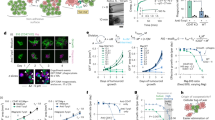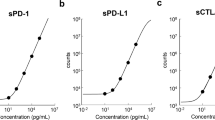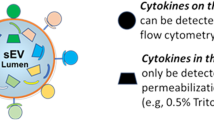Abstract
Immunoreactive and bioassayable plasma fibronectin (opsonic α2 surface-binding (SB) glycoprotein) was measured during experimental Sarcoma-180 tumour growth in mice. Male C57BL/6 mice were challenged s.c. with 2 × 106 viable Sarcoma-180 tumour cells and evaluated sequentially in parallel with saline-injected controls over a 21-day experimental period. Before challenge, immunoreactive plasma fibronectin was 1050-1150 μg/ml. Minimal tumour growth occurred until 6 days after tumour challenge. There was then a rapid increase in primary tumour size, especially over the 7-14-day interval, with a plateau of growth over the 18-21-day interval. Immunoreactive plasma fibronectin was significantly (P < 0·05) raised at 3 and 7 days after tumour challenge. A rapid rise (P < 0·001) to 2816·6 ± 158·9 μg/ml was observed at 14 days followed by a modest decline at 21 days. Bioassayable opsonic activity increased (P < 0·5) with the rise in immunoreactive fibronectin 3 and 7 days after tumour challenge, but the rapid rise in immunoreactive fibronectin over the 7-14-day interval was associated with a significant (P < 0·5) fall in bioassayable opsonic activity. Thus, the rapid rise in immunoreactive plasma fibronectin parallels the rapid rate of tumour growth, but is associated with a fall in opsonically active plasma fibronectin. Dissociation between immunoreactive and opsonically active plasma fibronectin may be mediated by inhibition and/or alteration of circulating fibronectin during rapid tumour growth. Alternatively, it may reflect increased release of antigenically related protein (i.e. cell-surface fibronectin) during rapid tumour growth, which may have limited biological opsonic activity.
This is a preview of subscription content, access via your institution
Access options
Subscribe to this journal
Receive 24 print issues and online access
$259.00 per year
only $10.79 per issue
Buy this article
- Purchase on Springer Link
- Instant access to full article PDF
Prices may be subject to local taxes which are calculated during checkout
Similar content being viewed by others
Rights and permissions
About this article
Cite this article
Saba, T., Gregory, T. & Blumenstock, F. Circulating immunoreactive and bioassayable opsonic plasma fibronectin during experimental tumour growth. Br J Cancer 41, 956–965 (1980). https://doi.org/10.1038/bjc.1980.174
Issue Date:
DOI: https://doi.org/10.1038/bjc.1980.174
This article is cited by
-
Immunohistochemical study of fibronectin in human glioma and meningioma
Acta Neuropathologica (1983)



